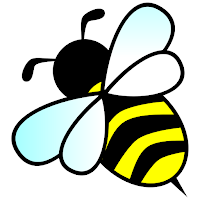I've been busy making traps for swarming season. Over the years, I've learned from others that a beekeeper can cut the queen cells out of the hive each year to multiply the hive. There's always about 5 to 8 queen cells that can be cut out and a person can even sell these cells to just about anyone in the world to be hatched in their new environment.
I've also learned that the adult queen will leave their hive once those queen eggs have been laid. Her scouts will go out and find good homes and then come back to communicate the locations to the hive. They are able to communicate the size and location of the new home. When they leave from their temporary location, they go as a group and swarm around the queen, protecting her. They decide on the best location and after a little while, head on over.
Here's a swarm on a tree outside our house in town. It's actually right across our fence in the neighbors tree....shhhh, don't tell! I knew they would be gone from this spot as soon as they found the perfect home I laid out for them!
Using lemongrass oil, I attracted them to their new home and by evening, they were settling in! Now the original hive will hatch the queen eggs without disturbing the hive. When the queens are hatched, they fight until there's one winner....can't have more than one queen! The strongest one lives, thus giving the original hive the best possibility of queen-bee strength.
Yes, I would get more queens if I cut them out of the hive, but I think this strategy is healthier for the original hive by giving it the best queen while, at the same time, doing no damage to it. As for the old queen and her crew, they get a new location they agree upon in their natural system. They communicate in ways we don't understant and when they agree on the new place, they are much happier! I want all my hives to thrive, so I'm testing this out to see if it makes them stronger and healthier. Nature has it's own way!






